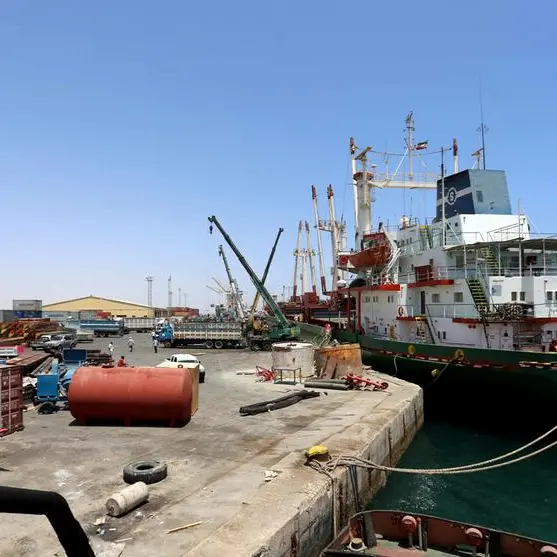PHOTO
China’s growing technological expertise along its digital silk road is expected to set benchmarks for the rest of the world to follow, according to analysts.
President Xi’s ambitious Belt and Road Initiative (BRI) started down the digital silk road long before the rest of the world began talking about connected smart cities and technology driven solutions.
As China continues to expand its digital footprint in sectors as diverse as cloud computing, 5G, surveillance technology and virtual currency, observers see movement in some areas toward Chinese technological dominance.
Dale Aluf, Director of Research & Strategy at SIGNAL (Sino-Israel Global Network & Academic Leadership) said China is already leading the world in artificial intelligence, blockchain, 5G, and quantum technology publications and patents. “Data fuels AI development and, thanks to its sprawling surveillance apparatus, China has access to immense amounts of it, so China seems well-positioned to emerge as a leader in this field.”
China has already launched the biggest blockchain ecosystem in the world, connected to over 100 city nodes, and was the first country to launch widespread pilots of a digital fiat currency - the Digital Currency Electronic Payment (DCEP) system.
Analysts agree that China has achieved enormous breakthroughs in some future technologies.
“These advancements in technologies allow China to more efficiently promote the progress of BRI, increase the bonding between China and BRI countries, and push BRI’s hard projects,” said Walter Wang, Consulting Director at research and consulting firm Frost & Sullivan, in Greater China.
Wang cited China’s world-leading fibre optic industry, which is already assisting BRI countries in transforming from traditional to renewable energy supplies.
Many countries aligned with BRI are rich in solar energy resources, but “lack the technologies and resources to construct renewable energy infrastructure,” according to Wang.
“Through BRI, China can export advanced renewable energy technologies to BRI countries and Chinese fibre optic enterprises are able to enjoy local preferential policies, including tax incentives, preferential treatment for equipment imports,” he added.
According to Frost & Sullivan research, in some infrastructure areas, such as high-speed railway, 5G networks, and ultra-high voltage power grids, China’s standards have become the international standards as everyone else plays catch-up.
“Therefore, through collaborating with Chinese enterprises, BRI partner countries can adopt the technologies that accord with the most advanced standards in their infrastructure projects,” said Wang.
Impact on BRI
According to SIGNAL’s Aluf, China’s technological prowess gives it an edge to push BRI’s hard projects, such as renewable energy, transportation, infrastructure, power, and healthcare since in today’s technology-driven world, the digital realm is intimately intertwined with hard infrastructure.
“Railways, ports, and electricity grids, for instance, would not be able to operate effectively today without software, sensors, and cybersecurity,” he noted
Moreover, China also provides a useful reference for BRI countries with its digital transformation and industrial digitalisation models.
Wang said most BRI countries are developing countries and have limited experience in dealing with digital technology but can benefit from China’s digitalisation experiences.
He gave the example of the Silk Road E-commerce platform that China developed together with 22 BRI countries in 2016. During the COVID-19 pandemic, China, and those aligned with the BRI, quickly adjusted their strategies, switching focus from offline to an online market, while exploiting the advantages of cross-border e-commerce platforms, creating more new growth points for the economic development of BRI countries.
In the future, Wang expects China to continue assisting BRI countries to improve their 5G infrastructure, the foundation of future digital transformation, and to promote their digital economies, such as popularising mobile payments to facilitate loan processes for SMBs and therefore alleviate “urgent need” financing during the pandemic.
How technology will be incorporated into BRI projects will depend very much on the nature of the projects, according to Jia Hao Chan, a research associate at Lee Kuan Yew School of Public Policy, National University of Singapore.
“And this will differ among regions and countries,” he said.
For instance, in late 2017, Chinese company Huawei Marine partnered with the Pakistani authorities to start constructing the Pakistan East Africa Cable Express, which will connect Pakistan to Kenya and Djibouti, focusing on hard infrastructure interconnectivity.
“This is essentially different from the areas China is looking out for in Southeast Asia (focusing on IT services, soft infrastructure), where tech companies like Alibaba and Didi Chuxing would collaborate with regional ride-hailing services like Grab, through investment partnerships.”
TECHNOLOGY EXPORTS
Given that the BRI is primarily a financing/investment mechanism, analysts at Fitch Solutions believe exporting technology simply adds a different dimension to the entire BRI assistance package.
“Broadly speaking, most BRI projects have already been dependent on using Chinese equipment and labour, so any kind of tech advancement might just mean higher quality or more efficient projects,” said Daine Loh, Analyst, Infrastructure and Power & Renewables, Fitch Solutions.
She pointed out that things like 5G and AI are still in their early adoption stage in the broader infrastructure sector, adding, “we do not expect it to be widely used yet”.
Loh said anything digital will tend to also require a larger investment amount, and “the financial capacity of BRI recipient markets will come into question here as well, especially if these markets are prioritising developing adequate infrastructure to meet their domestic needs first”.
The best way for BRI partner countries to benefit from China’s technological prowess is to partner with Chinese operators, according to Chris Devonshire Ellis, Chairman of Dezan Shira & Associates.
“In the West, the capitalist system has focused too much on profits and not enough on cashflow business and service lines. The Chinese are developing technologies to hook their services into supply chains to generate cash flow streams. That is a very sustainable business model,” he said.
LIMITS TO SHARING
While China has achieved digital supremacy in some areas of future tech, how much of it will be shared with its BRI partner countries remains to be seen.
While developing countries should be able to take advantage of ICT infrastructure, China “will not share in the ownership of the technology that drives the infrastructure,” according to Andre Wheeler.
“The technology is owned by China under its National Security legislative provisions. This may act as a barrier to future trade for these developing countries as they may be restricted in how they can conduct trade with the likes of the EU,” said Wheeler, who is also the chief executive of Asia Pacific Connex.
The Digital Silk Road, and the BRI is a supply-driven project, noted researcher Chan. He added that China’s technological offers do not guarantee the same level of adoption (demand) of tech goods and services across its partner countries.
“Moreover, there could be a lag effect in tech exports, where certain technologies gain a foothold in the Chinese market before they are deployed elsewhere.”
Hence, Chan suggested that BRI partner countries themselves should carefully consider “what they really need” and not merely “take whatever is put on the table”. “They also should consider their own ability to adopt the technologies they want, and their rate of innovation if they are going to attain competitive advantage in the long run.”
According to Wheeler, the digital silk road is the integrator of trade along the BRI – something that is being developed to create an integrated and seamless trade platform with all BRI participants.
“It is powerful in that it targets the key merge points in transport systems, particularly ports and rail.”
However, he pointed out that the shortcomings in the DSR/BRI integration could limit China to BRI partner countries or a regional role.
Whilst the EU–China Comprehensive Agreement on Investment (CAI) agreement in principle was heralded in January as a means of cooperation, Wheeler said there is also significant pushback from the EU, with regards to the recently introduced EU-Connectivity strategy that has led to the likes of Huawei being banned as a network provider in EU digital connectivity initiatives.
MAKING INROADS
But many countries are already enjoying the benefits of China’s augmentation of infrastructure and tech.
Aluf of SIGNAL pointed out that several Middle Eastern countries are cooperating with China on smart city technology, and there is even a project designed to streamline the experiences of pilgrims travelling to Mecca and Medina.
“China's 2Africa initiative, among the largest subsea projects in the world, aims to connect 23 countries in Africa, the Middle East and Europe with a resource-efficient fibre optic cable that uses Spatial Division Multiplexing technology,” he added.
Meanwhile, its SeaMeWe-5 undersea cable is expected to carry telecommunications between Singapore and France.
According to Frost & Sullivan’s Wang, most BRI partner countries have outdated data infrastructure, which means operational efficiency is low and maintenance costs are relatively expensive.
For long-term development, these countries will need to upgrade their existing infrastructure as well as initiate new infrastructure projects.
“China, as a pioneer, can provide these countries with the necessary technologies, financing and, more importantly, practical experiences,” said Wang.
For example, he said, China and the Republic of Belarus have jointly built industrial parks based on the industrial Internet. China also has transportation and internet infrastructure upgrading projects in Iran, Pakistan, Vietnam, Brazil, and Malaysia. “Thus, with the support from China, BRI partner countries will accelerate their infrastructure upgrading process and build up their information systems,” added Wang.
BEYOND TECH SUPREMACY
China’s dominance over future technologies will continue to grow but one overlooked aspect of the BRI, according to Ellis, is that it will turn China into a global supply chain middleman.
“It is not just making products and building the infrastructure, it will operate much of it. “Everything someone buys in Paris or London will have a price component that will have been charged by a Chinese business,” he said.
While there seems to be a tendency for observers to focus on specific technologies and their impacts on a given tech or economic sector, Aluf insisted that the true power of these technologies is unleashed through their augmentation.
For example, by combining embedded sensors, metering devices, cameras, and other surveillance tech with big data processing and aggregated data analysis, he said China has emerged at the forefront of smart city development.
“The same can be said for its fintech sector, with companies like Huawei, Tencent, and Alibaba leading the way.”
With China doubling down on achieving carbon neutrality, Aluf said it is also expected to pump significant resources into the development of clean technologies and renewable energy.
FUTURE INVESTMENTS
In terms of investment under BRI, China is likely to increase its funding for soft infrastructure under the Digital Silk Route but it does not necessarily have to be in the form of intergovernmental (G2G), government-to-business (G2B) or an industry-wide coordinated approach, noted Chan.
“They can be in the form of B2B at company level,” he said, adding that Chinese tech companies are already investing in many local/regional tech companies.
At government level, Chinese Premier Li Keqiang in March declared that China will increase its spending on research and development by more than 7 percent over the next five years in a push to make major breakthroughs in advanced technology.
At the same time, as part of its post-COVID-19 relief package, Aluf says China is ramping up plans to construct digital infrastructure grids across the country – including building 5G networks, artificial intelligence (AI), Internet of Things (IoT), intercity high-speed rail, and setting up research and development institutions.
“Considering the importance of China’s international digital expansion in the context of its global strategy, I think it’s very likely that China will increase funding for digital infrastructure under the banner of its Digital Silk Road,” he added.
While the COVID-19 pandemic has greatly affected the world economy, China’s non-financial outward foreign direct investment in BRI partner countries remained strong and positive, reaching $17.8 billion in 2020, an 18.3 percent increase from 2019, stated Frost & Sullivan.
In the first half of 2021, China’s non-financial outward foreign direct investment in BRI partner countries continued growing to $9.6 billion, with a growth rate of 8.6 percent.
“Based on historical data, we consider China’s spending on BRI partner countries will keep rising, and the cooperation between them will be more effective and comprehensive,” said Wang.
In the foreseeable future, he said communications and data infrastructure levels of BRI partner countries will largely influence the development of BRI. “Therefore, China will continue raising the funding in soft infrastructure to ensure the success of BRI.”
WEAK SPOTS
But China’s quest for technological leadership is not without its challenges. A weak spot is technology hardware that allows future technologies to work, like for instance, microprocessor/semi-conductor capacity, which involves fitting more transistors on a single microchip to effectively handle the large data flow/information exchange.
Wheeler pointed out that chip design is dominated by the US and South Korea, with five of the top seven design centres US-owned, while Taiwan and South Korea, between them, control 75 percent of world semi-conductor manufacturing capacity.
“China is currently trying to change the agenda to the discussion, not on technology development, but to argue for better chip utility. This is a significant issue as integrated circuitry and chip technology is central to smartphone development and use in IoT/AI etc – and is a significant hurdle to China as they move to develop a more advanced 6G network,” he explained.
Aluf noted that China’s push to achieve technological supremacy and drive global standards has raised concerns in some quarters.
“Against the backdrop of renewed great power competition, the West, and particularly America, is determined to maintain a lead over the development and standard setting for emerging technologies,” he said.
He opined that America’s Build Back Better (B3W) plan, projected to be worth $7 trillion, may serve as a counterweight to the BRI.
“If successful, it could dilute the influence of BRI projects - including those in the digital realm,” he said.
(Writing by SA Kader; Editing by Charles Lavery and Anoop Menon)
© ZAWYA 2022





















